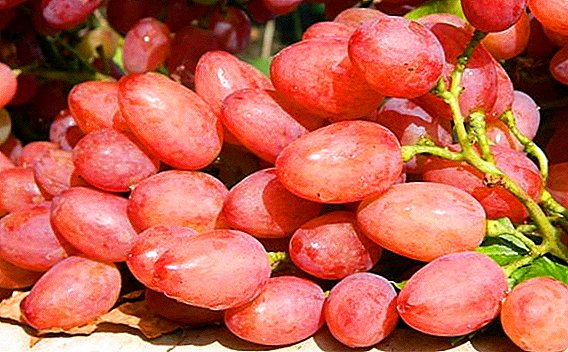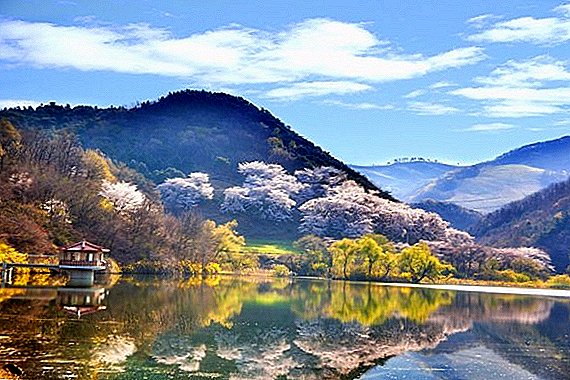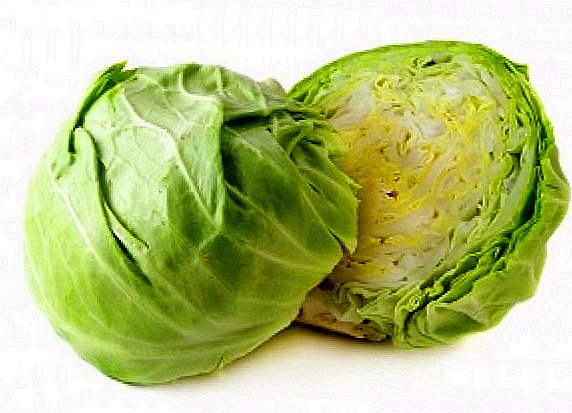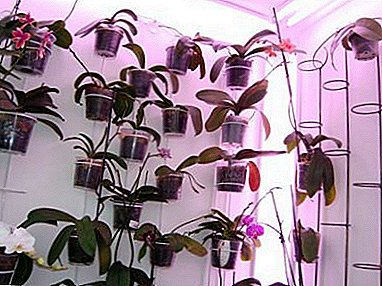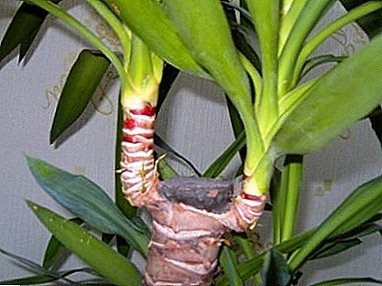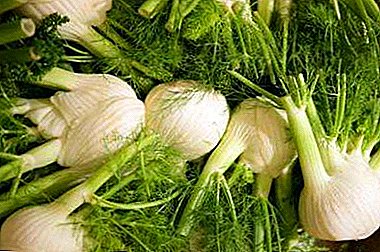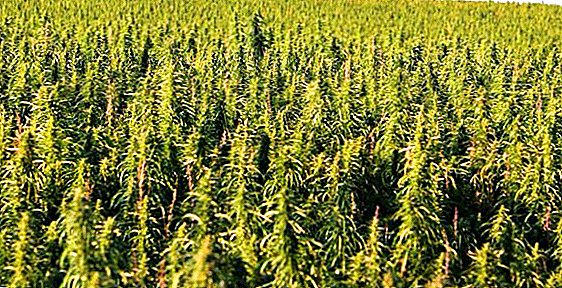 Hemp is one of the oldest plants. Technical hemp - one-year bast fiber culture. Its seeds are used as seed material for humans and animals. Hemp oils are used in medicine, cosmetology, and chemical industry. Plant stems provide fibers for the textile industry. During the famine, hemp was able to heat, provide food, and also relieve pain.
Hemp is one of the oldest plants. Technical hemp - one-year bast fiber culture. Its seeds are used as seed material for humans and animals. Hemp oils are used in medicine, cosmetology, and chemical industry. Plant stems provide fibers for the textile industry. During the famine, hemp was able to heat, provide food, and also relieve pain.
But in modern conditions, the cultivation of technical hemp, despite its undeniable benefit, raises many questions.
Industrialization of cannabis
The hemp industry has begun its industrialization a hundred years ago. The 20th century was not only a milestone in the rise in hemp industry, but also marked the activity of new developments in this industry. Developed technological processing culture.
In the seventies of the last century, the breeders of the Sumy Institute for Bast Crops invented technical hemp varieties, where tetrahydrocannabinol was either not available, or it was so small that it would be impossible to sense the effect of a ton of smoked plants.
Thanks to such activities, scholars cannabis, which was banned in most European countries because of the narcotic effect of culture, felt resuscitation. In Germany alone, over the past couple of decades, more than three dozen hemp processing plants have been built. In Ukraine, the crops of this culture were reduced rather rapidly.
Did you know? At the beginning of the 20th century, planting on Ukrainian land was more than 120 thousand hectares, in the mid-eighties - a little more than 70 thousand hectares, in the nineties - 10 thousand hectares, in 2011, a quota of 357 hectares was provided for sown areas for technical hemp. In 2008, technical hemp was processed at another three enterprises, and in 2010 - only at one.
Appearance
Technical (non-narcotic) hemp is a one-year lubovoloknistoy culture of the Cannabis family, containing a THC of not more than 0.08%, intended for growing fiber and seeds.
In the whole culture, the stem is the most valuable, it makes up to 70% of the total weight. That he is a source of fiber. In length, the stem can reach from 80 cm to 4 m, depending on the variety of the crop and the conditions in which it is grown. Stem diameter ranges from 2 to 30 mm.
The stem of the plant is straight, branched, tetrahedral at the very top, in the middle of six faces, rounded at the bottom. In appearance, the stem of hemp is similar to flaxseed. The leaves of the plant are complex of petioles with jagged edges, have from 5 to 7 sheets.
Significant industrial crops such as sugar beet and flax have also significantly decreased.
 Culture flowers vary in sex. Male have five stamens and sepals of yellow-green shade, panicles differ in friability. Female inflorescences are complex spikes, they have large leaves at the top.
Culture flowers vary in sex. Male have five stamens and sepals of yellow-green shade, panicles differ in friability. Female inflorescences are complex spikes, they have large leaves at the top.Male representatives of the culture have long branches and a small amount of leaflets, while women’s women have lush foliage and characteristic odor. Fibers from male plants are characterized by elasticity and softness, from female plants - by durability and rigidity.
Male representatives of the culture grow faster and significantly higher, while women are capable of a greater accumulation of psychotropic substances. A female plant blooms a month and a half later than a male. Hemp fruits - oblong nuts, ribbed or smooth in appearance, often have a greenish-gray tint.
Important! Hemp plant is easily recognizable by the unique shape of the leaves, which spread out from the cutting, like fingers of a hand.

Chemical composition
Hemp includes about 420 various chemical compounds. Only 70 of them belong to the group of cannabinoids, which are characterized by psychotropic properties (this does not apply to the entire group of cannabinoids).
Find out what you can do from sorghum, cotton, barley.The content of THC and other similar substances, depending on the type of culture, is strongly deviated. For example, most psychotropics are found in Indian hemp. Technical hemp (seed) may not own a THC and, accordingly, any psychoactive effects.
In addition to cannabinoids, the structural elements of the culture are also endowed with many substances of other groups: terpenes, steroids, carbohydrates, phenols, carboxylic acids, nitrogen-containing compounds, alkaloids, which influenced the significant antibiotic characteristics of the plant. Therefore, identifying various plant species by psychotropic properties is a rather rash decision from the point of view of chemical analysis. 
Did you know? Until the beginning of the 19th century in the United States of America, it was allowed to pay taxes on cannabis.Technical hemp fruits rich in starch, protein, fatty, semi-drying oils, resins, vitamins and much more. From the seeds of the culture, a fibrin complex is obtained (an organic therapeutic substance that activates blood formation processes, the growth of bone tissue, and is also actively used for rickets).
Also, the grass of this plant is characterized by excellent antibiotic properties, and the decoction performs the enveloping and counteraction to the inflammatory processes in the body.
The most valuable product of processing technical hemp is hemp oilcontaining bactericidal substances, unsaturated acids, glycerols, amino acids, as well as various trace elements. This oil has vitamins A, B1, B2, B6, E, K, D. Also, modern experiments have shown that the substance contains carotene, chlorophyll and tannins, which have antitumor properties.
Find out what is useful oil of cloves, prickly pears, black cumin, rose, thuja, lavender.
Application
Technical hemp is a unique product that is able to provide nutritious and healthy food, heat, clothe in clothes, overcome health problems and even help in building a house.
In the weaving industry
Technical hemp is actively used in the industrial manufacture of fiber. When processing this product produces environmentally friendly clothes, shoes and underwear (which has therapeutic and prophylactic properties).
The most suitable part of the culture for light industry (fiber manufacturing) is the stem, which represents about 65% of the total dry weight of the plant. The length of the fiber produced directly depends on the type of crop and the cultivation conditions.
On average, this figure is possible from 0.7 meters to 4 meters. Active realization of textile products from this culture is carried out both at fairs and on the Internet.
In the food industry
Ever since ancient times, our ancestors valued cannabis seeds as a storehouse of nutrients. Such seeds and leaves of plants are effectively used in the food industry.
The orientation on the food use of the culture has remained one of the most basic today. It is used in dietary, vegetarian, sports nutrition. The main in this regard are the seeds of the plant, in their composition 48% carbohydrates and up to 33% oil.
Find out what valuable garlic, sweets, green peppers, turmeric, cinnamon, carrots, apples, cherries, cherries, strawberries, white currant, black, red, feather grass, hemp nettle, mustard, sweet clover, castor oil.Nutritious, enriched with polyunsaturated fatty acids, vitamins and microelements, hemp seeds are consumed both independently and in the form of other producing products.
Oil - one of these products, characterized by a unique composition and a number of useful properties, get it by cold pressing from the seeds of culture. 
Important! Roasted hemp seeds were consumed as seeds until the middle of the 20th century, and the oil of this culture was one of the most eaten foods.
In medicine and cosmetology
Today, technical cannabis extract is intensively used for the production of useful personal care products, as well as at various stages of the manufacture of medicines.
Hemp oil has excellent antioxidant properties, so it is recommended for inclusion in the human diet for any problems with cancer, difficulty in breathing, digestion or cardiovascular system.
Pharmaceutical companies use the products of processing of seeds, leaves and components of the stems of a crop to create organic antibiotics, preparations for stimulating blood formation and formation of bone tissue, as well as substances to combat rickets.
With rickets, white mar, walnuts, turnips, burdock leaves, Manchurian nut, tricolor violet will help.
In production
In the furniture industry, hemp is considered an excellent filler for particle board and an effective environmental binder.  Farmers also use pressed cake from the seeds of the crop, including a huge amount of trace elements useful for animals, as a feed base for livestock.
Farmers also use pressed cake from the seeds of the crop, including a huge amount of trace elements useful for animals, as a feed base for livestock.
At home
Technical hemp is a resistant organic raw material and an effective antiseptic, which provoked a search for ways to use the products of plant processing in the construction business. The individual components of the culture are well suited for the production of finishing panels, additives to concrete (to increase strength indicators), foam plastic, as well as paint and varnish products.
The leading countries in the application for the construction of technical hemp are the United Kingdom (2009 - the launch of the program for the construction of houses, the walls of which consist of lime, hemp cake and dried plants) and Germany (used as the basis for flooring and also insulate the facades of houses).
alternative energy
The processed products of the outer covers of the stalk of technical hemp, as well as other dry plant components, are actively used as a source for the generation of thermal energy.
Learn how to use straw.
 Technical hemp pellets have less heat emission than bituminous coal, but more than most soft tissue wood cultures.
Technical hemp pellets have less heat emission than bituminous coal, but more than most soft tissue wood cultures.Did you know? The very first car model "Ford Model-T" traveled on fuel from hemp, some parts of this machine were also produced from this culture. Henry Ford liked to be photographed on the background of his own hemp field.
Pulp industry
Nowadays, wood pulp is most often used for paper making, so more than 40% of the annual logging is to meet the demand for paper. This method is not only irrational, but also destructive for the ecology in general and people in particular.
Even in ancient times, people knew how to use hemp for paper production, given that such paper is more qualitative, stronger, and costs much less than wood analogues. One hectare of culture is capable of producing six tons of cellulose, which is significantly more than one hectare of forest per year. The ripening cycle of technical hemp is only 120 days, and it can be grown almost everywhere.
The ripening cycle of technical hemp is only 120 days, and it can be grown almost everywhere.
Many historically significant documents have survived to this day solely due to the strength and durability of hemp paper: the first paper banknotes, the US Constitution and Declaration of Independence, the Gutenberg Bible, and much more.
At different times for the production of paper used eucalyptus, cow dung, tsiperus, yucca.The industrial revolution of the XIX century and the further development of capitalism presented a significant increase in demand for paper. The satisfaction of this demand was carried out on an industrial scale, but since the first production machines could not properly process hemp fiber for making paper, a simpler material, wood, was introduced.
 But today there are already productive technologies for the effective removal of silicates from the structure of hemp fiber, which will significantly soften the fibers and make them more suitable for conversion into paper, this should stimulate the transition to a more ecological and inexpensive type of raw material.
But today there are already productive technologies for the effective removal of silicates from the structure of hemp fiber, which will significantly soften the fibers and make them more suitable for conversion into paper, this should stimulate the transition to a more ecological and inexpensive type of raw material.Also, do not forget that the culture can be an affordable and convenient raw material for the production of organic plastic, twisted products (ropes, twine and other things), as well as environmentally safe biofuels.
Did you know? Back in 1916, the US parliament declared that by 1940, the entire pulp industry would work only on the basis of hemp, since, according to scientists, a quantity of paper produced from 1 hectare of this crop equals 4 hectares of forest.
Growing up
Since this plant grows best in cold soil with a gradual and slow warming, it is worth starting to sow it in early spring. The longest ripening period is about 120 days, which allows you to get a harvest in the summer (if sown in March).
Cultivation of technical hemp is best combined with the cultivation of other crops, each year honoring the rules of crop rotation.  Experienced farmers also recommend changing the seeds for planting once every several years (most often once every three years), and the family fund to be fully implemented or independently used for industrial purposes. This should be done in order to maintain a low level of THC (as required by law).
Experienced farmers also recommend changing the seeds for planting once every several years (most often once every three years), and the family fund to be fully implemented or independently used for industrial purposes. This should be done in order to maintain a low level of THC (as required by law).
It should be noted that, depending on the target application of the finished plant (obtaining seeds or fibers, simultaneous use or other), it is necessary to choose the appropriate variety and seeding rate of seeds.
Specialists of the agrarian sector point to a 100-kilogram seed rate, which should be evenly distributed over one hectare of working land. Southern varieties are the most prolific, so if they are planted they need only 20 kg per hectare.
Pea, beans, lupine, alfalfa, clover, sugar beets, potatoes, and corn will be good predecessors for hemp.
Necessary conditions for growing
Technical hemp is a fairly convenient crop for cultivation by any farmer, as this plant does not require much attention to itself, it matures equally comfortably on various soils, and is also suitable for cultivation in a variety of climatic conditions.
Hemp is sensitive to fertilizer, responds well to nitrophoska, nitroammoposku, slurry, manure.Hemp is resistant to temperature and weather anomalies (drought, high humidity), has a small amount of dangerous diseases and pests. At the same time, technical hemp deprives many weeds of conditions necessary for germination, and many harmful insect species are also afraid of hemp.
Technical hemp in relation to many types of useful plants that grow farmers, is an antagonist plant that activates the consumption of elements from the soil that are not needed or harmful to other plants (heavy metals), and also enriches the soil with products of their vital activity, which are extremely useful to other plants .
Therefore, culture is considered an important participant in crop rotation. At the same time, in order to increase the yield of this element of agriculture, it is still necessary to take into account certain features of cultivation.
Important! The most productive technical hemp grows in the lands where they used to grow winter cereals, potatoes or maize.

Recycling
Hemp is a unique plant that has a unique economic and environmental potential. Today there are about 35,000 products that can be produced by processing this plant.
The most obvious and simple, but no less valuable raw material for processing is hemp stalk fiber. This component is actively used for the production of various ropes, ropes, steel cable cores and clothing.
Technical hemp fibers have earned worldwide recognition due to their wear resistance, durability, and loss of useful properties in salty water and under extremely low temperatures, which has made products made from hemp fiber indispensable in the maritime business.  If at the processing stage we add synthetic or any natural fibers, then the resulting composite material can be effectively used for the production of cars, airplanes, and rockets. It is worth noting that it is possible to get valuable cottonized cotton, as well as materials for heat and sound insulation from a short technical hemp fiber.
If at the processing stage we add synthetic or any natural fibers, then the resulting composite material can be effectively used for the production of cars, airplanes, and rockets. It is worth noting that it is possible to get valuable cottonized cotton, as well as materials for heat and sound insulation from a short technical hemp fiber.
At the same time, the external woody parts of the stems are valuable raw materials for the pulp and chemical industries, the production of building materials, and also as a fuel for alternative power plants.
The cellulose obtained in the process of stalk processing is an indispensable component for the production of especially valuable and thin grades of paper, which does not turn yellow, remains durable and stable.Also, by polymerizing cellulose, it is possible to manufacture plastic, which does not bring any harm to the environment due to biochemical decomposition.  Technical hemp seeds, which are a valuable food product (48% carbohydrates), can also be actively processed. On average, hemp seeds contain about 29-35% of the oil, which has not only valuable nutritional properties, but is also actively used in the cosmetic and construction industries (paintwork materials).
Technical hemp seeds, which are a valuable food product (48% carbohydrates), can also be actively processed. On average, hemp seeds contain about 29-35% of the oil, which has not only valuable nutritional properties, but is also actively used in the cosmetic and construction industries (paintwork materials).
Also, after obtaining oil and other useful food elements from seeds, hemp cake remains at the disposal of the manufacturer, which is in the extruded form an incredibly valuable feed for livestock.
Important! With the help of the achievements of modern science and the processing industry, almost all known wooden, cotton, oil products can be produced from technical hemp. The biomass of this plant can be converted to methane, methanol, biodiesel or biogas, which are comparable in cost to petroleum products. Also, this production is safe and environmentally friendly.
Technical hemp is a completely safe plant in terms of narcotic effects on the body. The benefits of this culture and the applications of products based on it are increasing every year. 


